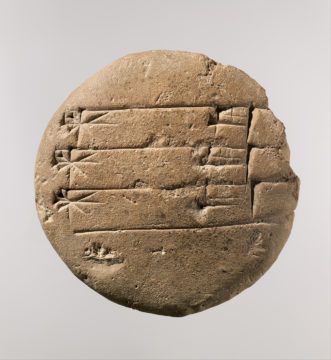Claire Cock-Starkey at Lapham’s Quarterly:

Sumerian pictographic writing includes a sign for “star” that looks like a modern asterisk. These early writings from five thousand years ago are the first known depiction of an asterisk; however, it seems unlikely that these pictograms are the forerunner of the symbol we use today. Palaeographers know that Aristarchus of Samothrace (220–143 bc) used an asterisk symbol when editing Homer in the second century bc, because later scholars wrote about him doing so. Physical examples of Aristarchus’ asterisks have not survived, so we cannot know their physical shape, but as the word asterisk derives from the Greek asteriskos, meaning “little star,” an assumption has been made that they resembled a small star. Aristarchus used the symbols to mark places in Homer’s text that he was copying where he thought passages were from another source. By the third century Origen of Alexandria had adopted the asterisk when compiling the Hexapla—a Greek translation of the Jewish scriptures, the Septuagint.
more here.
